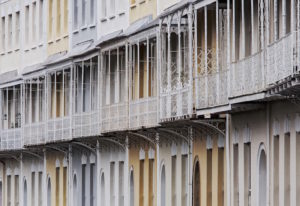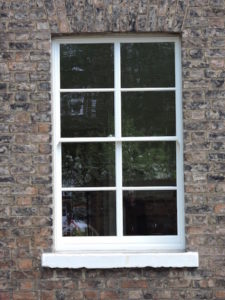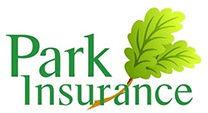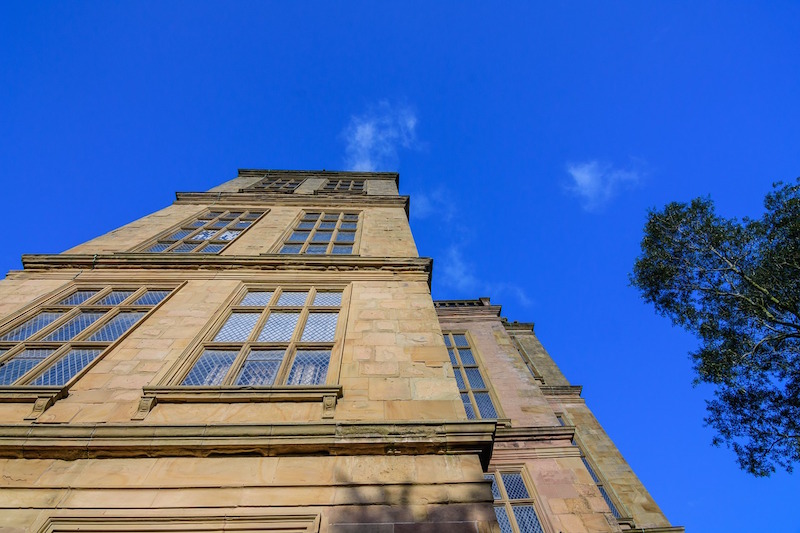Whether it was looks or location that drew you to buy a listed building, insurance is an essential. But getting the right insurance for your listed property can be a challenge. You need to take out specialist cover or your policy may be void, potentially leaving you footing a very big bill. You need to be accurate in the information you give too or again your policy can be void. Unfortunately, not every insurance company will cover your special home. That means it can be trickier to find cover. You may also discover that your listed building insurance quote is higher than for standard properties. Luckily, there are ways to get a better price on listed building insurance you can rely on. We’ve put together this guide to take you step-by-step through everything you need to know. Read on for advice on what cover you need and how to get the best price.
First, what is a listed building?
The listing marks that a property is of special architectural or historical interest. The listing aims to protect it for future generations.
 Listing is divided into three categories:
Listing is divided into three categories:
- Grade 1. This is the top listing for the most important buildings. Only 3% of listed properties fall into this category.
- Grade 2*. The level, with 5% of listed properties in this category.
- Grade 2. The most basic listing, which 92% of properties fall into.
How do I know if I live in a listed building?
If your home is more than 200 years old, there’s a chance it could be listed. All buildings constructed before 1700 and still retaining some original features are listed. Many properties built between 1700-1840 are also listed. There are also some modern homes and properties that are listed because of their special interest. For example, Charles Jencks’s Thematic House of 1979-1985.
Most people will be aware that they are buying a listed building during the purchase process. If you’re not sure, you can double-check using these links:
- For properties in England, head to Historic England
- For properties in Wales, search CADW
- In Scotland, look at Historic Environment Scotland
- In Northern Ireland, it’s the Department for Communities
Why do I need listed property insurance?
Firstly, if you have a mortgage, you will probably have to have insurance too. Most mortgage lenders insist on you having the right building insurance. Without it, you’ll be breaking the conditions of your mortgage.
 What if I own the property outright?
What if I own the property outright?
Even if you do own the building without a mortgage, listed building insurance is still prudent. Repairs and rebuilding any home can be costly. This is especially true of a listed building as you must restore it to the original condition. This can cost more than with standard buildings because:
- Listed buildings are often of more unusual construction. For example, you may need to rebuild it with lime mortar rather than standard cement. This building work is more specialist and more expensive than using standard modern construction methods.
- Listed buildings often have special features, including plasterwork, windows, or unusual roof construction. These can be more expensive to replace or repair.
Unless you’re confident you’ve got the necessary funds available to carry out any necessary repairs or rebuilding, you should consider listed property insurance.
What happens if I don’t repair a listed building appropriately?
As the owner of a listed building, you’ve taken on the responsibility to maintain it as a building of historical importance. That means if something happens and it needs to be repaired or rebuilt, you’ll be obliged to do it. If you don’t have insurance, you’ll be left facing a hefty bill. If you don’t carry out the work, your local council could order the repairs and send you the bill.
Why do I need specialist listed building insurance?
Standard building insurance, the sort you can generally find on price comparison websites, won’t usually cover non-standard buildings. This includes listed buildings. When you get your quote you need to be very careful to specify that your building is listed. If you don’t, your policy could be void. That can leave you with a big bill if something unexpected does happen.
 Do all insurance companies provide listed building insurance?
Do all insurance companies provide listed building insurance?
No. Many insurance companies do not offer insurance for listed buildings. Some companies specialise in listed building insurance. Some standard insurance providers also offer listed building cover. You’ll need to look around to find a company that will cover your home or ask your insurance broker to do this for you.
Why does listed building insurance usually cost more than standard building insurance?
Listed buildings insurance often costs more than standard insurance. The main reason for this is risk. Most listed buildings are older properties. They may be made out of non-standard building materials, like cob or lime plaster, or have a thatched roof. If they do need to be rebuilt or repaired, you will need to use the same materials to reinstate them. That normally costs more. That means an insurance company is likely to pay more if a claim is made for a listed building compared to a non-listed building. To mitigate that risk, your insurance company will charge you more money.
Other reasons can bump up the average cost of listed building insurance:
- Many listed buildings have a thatched roof. This can increase the severity of damage if there is a fire. That can mean a bigger payout if a claim is made.
- Listed buildings are also more likely to suffer from issues such as damp or rot. That’s because most of them tend to be older. This also increases the risk in the eyes of the insurance company, and will therefore increase the average cost of listed building insurance.
- Your grade listing. If you have a Grade 1 property, it is likely to be more challenging, and more costly, to insure than a Grade 2 listed property.
Insurance premiums are calculated using a formula that balances risk. That’s why premiums for listed buildings are usually are higher than for similarly sized buildings in the same area that are not listed. To compare costs for listed building insurance, be sure to speak to an insurance broker.
 Listed building insurance traps to avoid
Listed building insurance traps to avoid
We all want to spend as little as possible on insurance. However, when it comes to estimating your rebuild costs, it pays not to scrimp. If you do, you could find yourself seriously out of pocket.
All repairs to listed buildings need to be approved by your local planners. You’ll need to use the same construction materials as were originally used for any repairs or rebuilding works. Remember, these can be more expensive than modern methods as well as require more expensive, specialist craftsmanship.
For example:
- Thatched roof
- Cob walls
- Lime render
- Wooden windows
- Plasterwork
How can I check how much it costs to repair a listed building?
It’s worth taking the time to accurately assess the rebuild costs of your home. Alternatively, pay a chartered surveyor to do this for you. While it may mean an initial outlay, if something unexpected does happen you’ll be confident you have the right level of listed property insurance cover. Underestimating the rebuild costs of your home is unlikely to save you a significant amount of money. But it could leave you with a massive headache to sort out if you do come to rely on your insurance.
Estimating your rebuild costs:
- The Association of British Insurers has linked up with the Building Cost Information Service to help homeowners estimate the likely costs of rebuilding a property. Find the calculator here.
- Remember that if your home is listed, costs are likely to be significantly more. Some estimates suggest around 30-40% more, but it will be entirely dependent on the type of home you own and the construction.
 How to get a value for money listed building insurance quote
How to get a value for money listed building insurance quote
While listed building insurance tends to be higher than standard building insurance, there are ways of securing a better value deal.
1) First, buy your building and contents insurance together
Building insurance covers the structure of the building and fixed fittings, like kitchens and bathrooms, against fire, flood, and other damage. If you want to insure the contents of your home, from sofas and TVs to your clothes and tech like your phone, you’ll need to buy contents insurance. It’s worth looking for a bundle deal. Buying buildings and contents insurance together will often cost less than purchasing these separately. If you own high-value items, like art and antiques, you may also need specialist insurance cover. So speak to your broker to tailor your cover to your specific needs.
2) Tweak your excess
In some cases, you may be able to reduce your premium by increasing your excess. The excess is the amount you’ll automatically pay when you make any claim. A higher excess can make sense on a buildings insurance policy because most claims will be for more substantial amounts of money. Be careful not to set your excess too high. Otherwise, it could become unaffordable to make a claim. As a rule of thumb, never set your excess higher than you could easily afford to pay. It’s also worth double checking if increasing the excess makes any difference to your premium. In some cases, quotes will stay the same even if you set a higher excess. That means you’ll pay more if you do make a claim, but don’t make any savings now.
3) Shop around
Like all insurance, it pays to shop around when you’re looking to renew your listed buildings insurance. You’ll discover that you can’t use comparison websites for a listed building. That means you need to get ready to do the ringing around or online form filling yourself. Alternatively, you can use an independent broker like Park Insurance to do the leg-work for you.
Finally
The Park Insurance team has 30 years of experience helping owners of non-standard properties. For example, homes with thatched roofs, older properties, and listed buildings. We use our knowledge of the different listing grades and categories to find you the best price on insurance that meets your specific needs.
We’re not just here to get you the best price on listed building insurance. We’ll help guide you through what level of cover you need, so you don’t find yourself out of pocket. We can advise on the different types of cover that might be suitable for you. And we can put these together into a great value bundle.
We can check to see if tweaking the excess will make any difference for you. And we’ll make sure that nothing gets accidentally left out by mistake. As independent brokers, we have access to a wide choice of trusted insurance companies. And as we understand homeowners’ needs, we’re in a strong position to negotiate hard on your behalf. Call our friendly team on 0117 9556835 or get a free listed building insurance quote.
This article was originally published in August 2018. It has since been completely updated to provide you with the best and most accurate information.

